Nipple-Sparing Mastectomy
NIPPLE-SPARING MASTECTOMY

Nipple-sparing mastectomy preserves the nipple, areola and breast skin, and therefore enables the most natural-looking outcomes following breast reconstruction. Several different incisions can be used for nipple-sparing mastectomy. The optimal incision will depend upon many factors including breast size, patient preference, surgeon preference and the reconstructive plan. Several of the more commonly used incisions for nipple-sparing mastectomy are illustrated.

There are a variety of methods of nipple reconstruction; one commonly utilized method of autologous tissue nipple reconstruction is illustrated here. (A) The skin and fat that will form the projected nipple are surgically lifted from the breast reconstruction. (B) The tissue is brought together to form a nipple, and all incisions are closed with dissolvable stitches. (C) The nipple reconstruction is completed. Once the nipple has fully healed, tattooing can be used to shade the nipple and restore the appearance of the areola (not shown).
Women considering mastectomy to treat breast cancer or for risk reduction (prophylactic mastectomy) may be candidates for innovative procedures that can significantly improve the appearance of their reconstructed breasts. Nipple-sparing mastectomy (NSM) or as it is also known, nipple-preserving mastectomy, though not presently as widely performed as skin-sparing mastectomy, is the most cutting-edge technique of mastectomy presently available.
NSM removes the breast gland, but allows a woman to keep her nipple and areola in place. NSM is intended to improve cosmetic outcomes following mastectomy without compromising cancer care or the effectiveness of risk reduction surgery.
When appropriate oncologic and aesthetic criteria are strictly applied, NSM has the potential to allow women to preserve their nipples and areolas (the areola is the pigmented area surrounding the nipple) and enjoy the best possible cosmetic results following mastectomy and immediate breast reconstruction.
While there is still some debate about NSM in the medical community, an ever growing number of studies published in peer-reviewed journals including the Annals of Surgery, Annals of Surgical Oncology, The Breast Journal, Journal of Clinical Oncology, and Plastic and Reconstructive Surgery suggest that NSM can be safely performed in carefully selected patients. While not all women are candidates for NSM, the procedure may be appropriate for the treatment of certain breast cancers as well as for women undergoing prophylactic mastectomy.
Nipple-sparing mastectomy, is more difficult to perform than skin-sparing mastectomy because a breast surgeon must remove the ductal tissue directly behind the nipple, yet preserve sufficient blood supply to the skin and nipple and not leave breast tissue behind. For this reason, it is important that women considering nipple-sparing mastectomy choose a breast surgeon with experience in this cutting-edge procedure in order to assure both oncologic and cosmetic success.
Like all surgical procedures, NSM has benefits and risks. A woman considering this procedure must discuss it carefully with the members of her breast management team and make a choice that best suits her individual needs. Though the cosmetic benefits of keeping one’s own nipple and areola are readily apparent, women who are considering NSM must be aware of the potential risks of the procedure. In situations where NSM is either not recommended or desired, a Skin-Sparing Mastectomy is almost always an excellent option that can provide excellent cosmetic results.
Nipple-Sparing Mastectomy in Connecticut & New York
Our practice specializes in the most sophisticated techniques of natural-tissue breast reconstruction. When combined with nipple-sparing mastectomy, perforator flaps such as the DIEP flap, the SGAP flap and the SIEA flap can be used to restore the form of a woman’s breasts with healthy, warm living tissue; such reconstructed breasts may appear almost indistinguishable from those removed by mastectomy. We work closely with breast surgeons who are experienced at performing nipple-sparing mastectomies.

